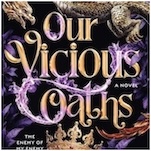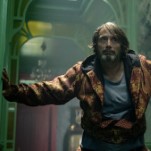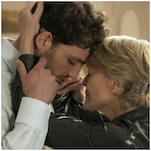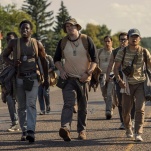The Best Historical Documentaries on Netflix

You’ve worked a long day. But as you settle into your most comfortable chair with a remote in your hand, there’s nothing that says you can’t also learn while you unwind. And few things combine education and entertainment as seamlessly as a well-crafted historical documentary. If you’re a Netflix subscriber, you’ve got a nice selection of historical documentaries at your fingertips, whether the history you’re most interested in is military, human rights, true crime or music. The following films and miniseries range cover everything from ancient cave paintings to mysteries still being uncovered, but they all tell fascinating stories from the past.
Here are the best historical documentaries on Netflix:
1. ProcessionYear: 2021
Director: Robert Greene
Rating: R
In his films, Robert Greene has tried to bring the alienated past into the present. Kate Plays Christine, from 2016, uses Kate Lyn Sheil’s preparation to play Christine Chubbuck—the newscaster who died by suicide on air 42 years earlier—in part to navigate an actor’s responsibilities when trying to resurrect a real person relegated to folklore. 2018’s Bisbee ’17 chronicled the reenactment, on the event’s 100th anniversary, of the forced removal and abandonment of more than 1,200 striking miners from their homes into the Arizona desert. As Bisbee community members take on the roles of both deputized corporate thugs and workers demanding better lives, in many cases inhabiting the personas of their own ancestors, they come to better understand the sway such history still holds over today. Even in Actress, Greene’s 2014 portrait of Brandy Burre returning to acting as she reinvents her personal life, re-evaluating the past is an act of taking control. When Burre slowly goes back on stage, engaging with old friends and with the visceral excitement of being in front of an audience, she begins to steer her life away from a toxic marriage and define herself anew. She realizes she’s no longer obligated to hold on to her old self. Procession, Greene’s latest film and his first for Netflix, is again about acquitting the present from the past. It begins with a 2018 press conference in Kansas City, Missouri. Lawyer Rebecca Randles stands with three of the survivors stating that they can call out more than 230 known Catholic clergy members in the Kansas City area part of a far-reaching network of sexual abuse. Seeing this, Greene reached out to Randles with the idea to use drama therapy, closely guided by registered drama therapist Monica Phinney, to give a small group of survivors the chance to transform their nightmares into something dramatic, to potentially transform their trauma into something survivable. Procession presents this approach: Six men scripting, storyboarding, location scouting and finally shooting their worst memories, however they want to interpret them, interspersed with the completed results. The young actor who stars in each of the segments, Terrick Trobough, spends much of the film in the company of the six survivors, hearing their stories and quietly, professionally doing his job. He witnesses them weep and punch things and disassociate, not because they’re fragile, but because they’re broken. Terrick responds that he believes their stories. Later, with Dan (one of the survivors) following an emotional moment, Terrick asks him, “How are you?” Maybe he’s just being polite, but Terrick’s small gestures of empathy glow brightly. As does Procession, when the beauty of Greene’s filmmaking satisfies the intelligence and clarity of his methods. “I hope the strength you showed is rewarded with peace and contentment,” another survivor tells himself near the end of the film, reaching decades into the past. A close-up of his face lets the audience know if that hope has been resolved. It’s very good kino.—Dom Sinacola
2. 13thYear: 2016
Director: Ava DuVernay
Rating: NR
Director Ava DuVernay has successfully made a documentary that challenges and even dismantles our collective understanding of one of the most dangerous notions of our time: “progress.” How do we define progress, and who precisely gets to define it? 13th is a captivating argument against those who measure progress with laws that pretend to protect American citizens and amendments, and even to uphold the Constitution. It is a deftly woven and defiant look at how clauses within those amendments (specifically the lauded 13th) and the language of our political system both veil and reveal a profound and devastating truth about America: Slavery was never abolished here, DuVernay and the participants in the film argue. It was simply amended, and it continues to be amended in 2016, with the constant evolution of the criminal justice system. It’s a bold and terrifying statement to make, but in using a documentary instead of, say, a narrative film, DuVernay is able to point directly to that history and to those people who have defined “progress” for black Americans. In doing so, she draws a line directly from the 13th amendment, to today’s America, which has the highest rate of incarceration in the world. Like some of the best documentaries of our time, 13th is not just a film, but a demand; it’s a call to reject dangerous reiterations, specifically newer and newer Jim Crows. DuVernay’s work doesn’t expressly name what we might build in their place, but it demands that those of us watching resist the seduction of sameness disguised as slow progress, and imagine something greater: actual freedom. —Shannon M. Houston
3. Crip CampYear: 2020
Directors: Nicole Newnham, James Lebrecht
Rating: NR
Crip Camp, a documentary about a summer camp for disabled teens, is a movie that, in a casual director’s hands, could turn very easily into a piece of exploitation honed in on adversity. But Jim Lebrecht and Nicole Newnham aren’t casual. They’re coworkers, having collaborated on three documentaries together over the past decade and a half, and Lebrecht, who has Spina Bifida, attended said summer camp in 1971. The film is a personal matter for Lebrecht, facilitated with his longtime colleague. Guided by their relationship, Crip Camp functions partly as a portrait and partly as advocacy. Half of it is spent strolling down memory lane, revisiting either through oral history or archival footage days at Camp Jened in the Catskills, where teenagers with disabilities—deaf teenagers, blind teenagers, teenagers who survived polio, teenagers with cerebral palsy—congregated under the guidance and care of hippy counselors. Here the teens, many for the first time in their lives, were treated simply as teens, and not as societal inconveniences. The other half of the movie unfolds against the backdrop of the battle for Section 504, fought in 1977, as disabled Americans, many of them former Jened campers, organized protests and a famous sit-in to persuade Joseph Califano to sign the important regulations into law. The campaign for disabled rights deserves a spotlight for its own merits, as this isn’t really a chapter in history standardly taught in American schools, but the specifics of Crip Camp’s subject speaks to a broader, urgent point about the power of community: When people unite under one banner for a common cause, there’s little they can’t accomplish. A message as timely as it is timeless. —Andy Crump
4. Rolling Thunder Revue: A Bob Dylan Story by Martin ScorseseYear: 2019
Director: Martin Scorsese
Rating: NR
Bob Dylan’s life and career are so encased in myth that it can be hard to untangle the romanticism from the reality. As much a symbol as he is a man, Dylan has spent most of his adulthood resisting being labeled the voice of his generation while slyly welcoming fans’ desire to dissect his every utterance, devoting much of the last couple decades opening up the vaults to release a series of official “bootleg” recordings associated with his most iconic albums and tours. He invites us to look deeper and listen harder, as if the answers can be gleaned from closer study. Long before David Bowie, Tom Waits, Madonna or Lady Gaga dabbled in persona play, Robert Zimmerman made us ponder masks in popular music. He’s both there and not there, which can be frustrating and fascinating. Both sensations are on display in Rolling Thunder Revue, the oft-spectacular, sometimes shtick-y chronicle of Dylan’s 1975 Rolling Thunder tour. As is typical when depicting anything in the Dylan universe, this concert film/documentary simultaneously oversells its subject’s genius and provides overwhelming evidence of what a brilliant artist he is. The documentary’s full title should also be a disclaimer: Rolling Thunder Revue: A Bob Dylan Story by Martin Scorsese. Early on, the movie features a contemporary interview from Dylan confessing that he doesn’t quite remember what prompted Rolling Thunder or what his ambitions were. “I don’t have a clue because it’s about nothing,” he says, another example of obscuration and seduction. The movie is a “story,” which means some parts might be invented or exaggerated, and because it’s “by Martin Scorsese,” the whole film is filtered through one artist’s perspective on another. Scorsese is after something grander than mere documentation—more layers of myth are applied while trying to present an honest account of a tour and a performer. At nearly two-and-a-half hours, Rolling Thunder Revue is overlong but also overpowering, inconclusive yet undeniably stirring. It left me exhausted, but I kinda want to see it again. —Tim Grierson
5. Won’t You be My Neighbor?Year: 2018
Director: Morgan Neville
Rating: PG-13
Morgan Neville’s winning portrait Won’t You Be My Neighbor? withholds darkness. Which makes sense since the Oscar-winning director of 20 Feet From Stardom has turned his attention to Fred Rogers, a kindly TV personality who entertained a couple generations of kids with his benign PBS program Mister Rogers’ Neighborhood. Rogers died in 2003 at the age of 74, and this year marks the 50th anniversary of his landmark show, so expect plenty of tributes over the next several months. Appropriately, as an official chronicling of the man’s life and legacy, Won’t You Be My Neighbor? isn’t remotely innovative. We get polished interviews from colleagues, family members and Rogers’ widow. There are plenty of clips from his show, as well as other archival material. There’s a gimmick-y recurring use of animation to illustrate parts of his story that’s the only truly cloying element of a film that mostly eschews mawkishness. And yet, Won’t You Be My Neighbor? is a stunningly moving film that also feels just the teensiest bit radical. That word will be used a lot during this golden anniversary for Mister Rogers’ Neighborhood, as his fans remind everyone that, rather than starring a smiling square who couldn’t have looked less manly, the show was actually a pretty progressive program that frankly discussed everything from race relations to John F. Kennedy’s assassination. Neville accentuates Rogers’ unembarrassed sweetness as an example of his principled stand against bigotry and injustice, making the case with conviction and gusto. The film is a tasteful, loving (but not fawning) depiction of a decent, unassuming man. The movie’s not just a balm—it’s an opportunity for viewers to reconnect with their own decency, and Neville’s gentle skill at arguing for goodness ends up being a minor miracle. —Tim Grierson
6. The SquareYear: 2013
Director: Jehane Noujaim
Rating: NR
Bringing calm insight to an impassioned, still-developing historic event, The Square looks at the 2011 Egyptian Revolution from the perspective of those who were on the frontlines from the very beginning, personalizing the dramatic developments without losing a sense of greater stakes. Director Jehane Noujaim, who previously helmed Control Room and co-directed Startup.com, has delivered a snapshot of a grassroots political movement over its bumpy two-year history, embracing the emotional complexity and logistical obstacles that have made Egyptians’ road to democracy so difficult. Using no voiceover narration and only a handful of intertitles that inform the viewer about the exact time period of events, The Square seeks to create an urgent, immediate experience that tells its story through the reactions of its main participants. In the West, the scenes of peaceful, joyous protest at Tahrir Square were warmly greeted as hopeful signs of a new Middle East. The Square doesn’t throw cold water on those hopes as much as it meticulously demonstrates that systemic change does not come easily. That’s why you care so deeply about the people you see in this movie—it’s not that their quest is easy but that it’s so very hard. —Tim Grierson
7. They Shall Not Grow OldYear: 2023
Director: Peter Jackson
Rating: R
Even documentaries are not entirely immune from the human desire to engage in mythmaking. We’re always looking for a narrative, in history and in our own lives when the truth is that a lot of things happen for inscrutable reasons and no person or society fits easily into a neat little box. The incredible achievement director Peter Jackson and his team of restorers have pulled off in They Shall Not Grow Old is making that sort of narrative seem so real that any skepticism you have about it is totally overwhelmed as you’re watching it. It’s an unqualified triumph of film restoration, possible only thanks to the century of technology that separates its subject from the final result. The documentary is built from the voices of World War I veterans reliving the conflict in their later years, cut over original video footage from the war provided by the UK’s Imperial War Museum to commemorate the centennial of the end of the war. The film completely eschews narration, letting voice recordings of the British soldiers who served at the front tell their stories with no chyrons and little more in the way of structure than beginning at their enlistment and ending with their stories of returning home. The first stretches of the film are in rough black and white, and for this stretch, while the old men are narrating their experiences at boot camp, it looks very much like something you’ve seen in class. The hat trick of changing over to the footage that’s been fully restored, colorized, surround sound-designed and rendered into 3D, is somehow a reverse Wizard of Oz: The grim realities of the trenches and the front are the part of the film being made to seem real in comparison to the drab safety of home. With the painstaking craft used to imbue color and sound and some semblance of reality to the footage of these long-dead men, They Shall Not Grow Old all of a sudden becomes one of the most urgent documentaries of recent years despite focusing on a subject a century after the fact. They Shall Not Grow Old is only telling one side of a complicated story. In this case, it’s being told in an unforgettable way. —Kenneth Lowe
8. The Battered Bastards of BaseballYear: 2013
Directors: Chapman Way, Maclain Way
Rating: NR
There’s always been something romantic about independent minor league baseball teams, but that romance has never been quite in full bloom like the story of the Portland Mavericks, a team with no major league affiliation. Owned by actor Bing Russell (Kurt Russell’s dad), Maverickdom spread from Oregon to the nation, beginning with Joe Garagiola’s NBC special. With characters like blackballed Yankees pitcher Jim Bouton, the first woman general manager in baseball (age 24) and the first Asian-American (at 22), the inventor of Big League Chew, batboy Todd Field (Oscar-nominated screenwriter for In the Bedroom), and a ball dog, the antics of the team were as entertaining as the game itself—and yet the their run from 1973-1977 was one of the best in the minor leagues. Bing’s goal was to embody that baseball cliché: For the love of the game. As Bouton says of his fellow $400-a-month teammates, “Our motivation was simple: revenge. We loved whomping fuzzy-cheeked college-bonus babies owned by the Dodgers and Phillies.” The Mavericks’ is an underdog story made for a documentary, and Chapman and Maclain Way have given the team the movie it deserves. —Josh Jackson
9. The Two Killings of Sam CookeYear: 2019
Director: Kelly Duane de la Vega
Rating: NR
The Two Killings of Sam Cooke is another installment of Netflix’s original music documentary series ReMastered, attempting to create a holistic portrait of American soul legend Sam Cooke—one that doesn’t carelessly whitewash his story just because his crooner soul also appealed to white audiences. In an effort to save his “murdered legacy,” the film examines his early roots in black churches, the evolution of his music, his impressive business acumen and his political activism later in life, which is believed to have led to his eventual murder. As Cooke became an increasingly influential cultural figure, his associations with other politically active black figures like Malcolm X, Muhammad Ali and Jim Brown posed a threat to the racial status quo. Cooke’s murder arises as an integral point of discussion in the film, and the details to this day are still muddy. Just as Cooke began writing politically-minded music—the sequence where “A Change is Gonna Come” plays in the background is breathtaking—his life was tragically cut short, and this film is a reminder of his unbelievable talent, and his embrace of blackness, that history largely forgot. —Lizzie Manno
10. What Happened, Miss Simone?Year: 2015
Director: Liz Garbus
Rating: TV-14
Liz Garbus’s What Happened, Miss Simone? probably errs too far towards a thesis that Nina Simone’s mental health was the cause of her genius, rather than a factor that complicated it. But what saves the film, and what makes it engaging, is that I’m not sure Garbus wholly believes that thesis, because many moments in the film betray it. So even though there are times where Garbus elides aspects of Simone’s life and career to represent her decline as inevitable and linear (and even though she problematically chooses to use interviews with Simone’s abusive ex-husband to narrate Simone’s life), the parts of the film where Simone is allowed to speak for herself—from her diary, from interviews, while performing onstage—are utterly compelling. They portray an artist in the late-1960s at the height of her powers and skill, in complete control of her piano and her voice, and brashly embracing radical politics and Black Power in a way that most contemporary popular musicians were far too scared to do. Sure they also portray an artist who was clearly struggling with fame, responsibility, politics, anger, and self-worth—but, especially in performance, the sheer scope of Simone’s technical skill and artistic sensibilities often escape the imposed rise-and-fall narrative. Even footage from late in Simone’s career provides evidence of her insane musical skill: her reinterpretation of early hit “My Baby Just Cares for Me” over a piano arrangement that sounds like one of Bach’s Inventions is astounding in about 30 different ways at once. Though I can only recommend this film with the caveat that it feels overly storyboarded to exploit a tired old idea of the tortured artist in order to answer its titular question—as in, “Q. What happened?; A. The very qualities that made her great also haunted her”—the concert footage alone makes this documentary worth digging into. —Mark Abraham
11. Jim & Andy: The Great BeyondYear: 2017
Director: Chris Smith
Rating: NR
The porous boundaries between storytellers and their stories are the linchpin of Netflix’s Chris Smith-directed, Spike Jonze-produced Jim & Andy: The Great Beyond, a fragmentary, yet compelling, look at the extreme lengths to which Jim Carrey went to portray his idol, singular entertainer Andy Kaufman, in the late Milos Forman’s 1999 biopic Man on the Moon. The film’s narrative hook is immediate: Jim & Andy draws from hours of behind-the-scenes footage that Universal had mothballed so viewers wouldn’t think Carrey, then one of Hollywood’s biggest and brightest stars, was “an asshole.” As we see some 18 years later, Carrey embodied Kaufman both on camera and off, his method acting antics begging meaningful questions about what drives performers to give themselves over to fantasy as well as how warped reality can get with such immersion. Jim & Andy is as moving as it is thought-provoking, a reminder that often in art there is no great joy without great pain. —Scott Russell
12. Miles Davis: Birth of The CoolYear: 2019
Directors: Stanley Nelson
Rating: TV-MA
Whether you thought he was a madman, a genius, or both, there’s no doubt that Miles Davis was a visionary. Davis single-handedly changed the face of jazz music, and music at large—both popular and avant-garde, for decades. This film takes you through his childhood and time at Juilliard, all the way to his mighty reign in the clubs of New York City’s famous 52nd Street, Newport Jazz Festival and his triumphant comeback shows in the 1980s. Davis wasn’t just one of the most influential artists of the 20th century, he was also the embodiment of American sophistication. Davis wore sharp suits, drove a Ferrari, and hung around other once-in-a-generation artistic giants like Picasso and Jean-Paul Sartre in Parisian clubs. Despite being a cultural superhero, Davis was no real-life superhero. He struggled with a heroin addiction, and he physically abused his wives on multiple occasions, and the film doesn’t try to mask these other sides of Davis. He certainly had a tortured artist mythology around him and a relentless devotion to his craft that almost appears sociopathic—similar to Michael Jordan’s portrayal in The Last Dance. Davis saw himself in the same league as Stravinsky, and because of his ego, he didn’t seem like a great guy to be around. However, this film grapples with his complicated life and succeeds not just at unmasking his origins and motivations, but at illustrating how integral he was to the artistic landscape for generations to come. —Lizzie Manno
13. Mercury 13Year: 2018
Directors: David Sington, Heather Walsh
Rating: TV-PG
One of the most gutting facts underscored in Hidden Figures was how much creativity and intellectual excellence a society loses when it lets its prejudices set the limits on its ambition. The United States’ inability to beat the USSR in getting a man into space, Hidden Figures made clear, was a direct result of the implicitly biased perspectives of the white men in charge of the program. Netflix’s Mercury 13, which tells the story of the 13 female pilots who, following the whizbang excellence of the Women Airforce Service Pilots in World War II (full disclosure, my grandmother was among them), were put through the exact same physical and psychological tests as the first set of male astronauts and matched (and sometimes exceeded!) their results but who were nevertheless shut out by lawmakers from becoming astronauts themselves, takes this clarity a step further: Because of the explicitly biased perspectives of the white men in charge (and in the Hero Astronaut spotlight), the USSR beat the US in getting the first woman into space. Many of the women who made up the Mercury 13 are no longer alive, but the ones who are and who participated in this documentary have lost none of the sharpness of purpose that made them such crackerjack pilots, and that would have made them equally crackerjack astronauts. So while it would be nice if Mercury 13 showed a bit more about the transition from an all-male astronaut program to a co-ed one (it skips straight from the 1962 testimonies before Congress to Eileen Collins in the early 1990s) and addressed the social and political forces that kept the astronaut program so white for so long (Mae Jemison makes a single appearance in archival footage, but otherwise there is no reference is made to the forces that made the both the Mercury 13 and John Glenn’s cohort universally white), the very fact that it is making available to millions of people a part of history that is not well known makes it more than worth your time the next night you feel a hankering to stream a documentary. —Alexis Gunderson
14. Team FoxcatcherYear: 2016
Director: John Greenhalgh
Rating: TV-MA
Netflix released this original documentary just two years after Bennett Miller’s film on the same subject, but where Miller’s film stretched the truth into melodrama, Team Foxcatcher plays it straight. Working closely with Dave Schultz’s widow, Greenhalgh recounts the events leading up to Schultz’s murder at the hands of eccentric millionaire John du Pont. Even for the rare viewer unaware of the story’s tragic ending, Team Foxcatcher offers plenty of insight. In revealing home video footage and interviews with Schultz’s fellow wrestlers and friends, the film depicts life at the Foxcatcher estate, where champion wrestlers lived and trained together under du Pont’s financial support, a generosity fueled by a desperate desire for love and belonging. What begins as an athletes’ utopia becomes a strained, dysfunctional family: As du Pont’s paranoia grows, the wrestlers—concerned with their careers and livelihoods—do their best to placate him. Because in the end, Team Foxcatcher’s greatest asset is its heart—even in the face of bizarre and tragic events, the love this large, makeshift family has for each other (du Pont included) is incredibly moving. —Maura McAndrew
15. The Death and Life of Marsha P. JohnsonYear: 2017
Director: David France
Director David France’s documentary portrait of “the Rosa Parks of the LGBT movement” has come under fire from trans filmmaker Reina Gossett, who accuses France of purloining the idea for the film from a grant application she submitted to secure funding for her own film about the pioneering trans activist. Still, in bringing wider attention to Johnson’s life and work, the film is a worthwhile reminder that trans women of color were and remain queer revolutionaries—and that they were and remain disproportionately likely to be murdered, often in cases that are never solved. Following trans activist Victoria Cruz as she tries to find the truth behind Johnson’s 1992 death—which the police swiftly ruled a suicide despite indications of foul play—France blends true crime and the biopic into an illuminating treatment of a true American heroine. —Matt Brennan
16. Is That Black Enough For You?!?Year: 2022
Directors: Elvis Mitchell
Rating: R
Tracing the topography of Black cinema is daunting. For about as long as the movies have existed, Black Americans have been making them, which means there’s well over a century’s worth of productions to consider on their own merits as well as their influence upon the medium’s development. That’s a time-consuming enterprise, belabored by the unfortunate but unexpected fact of Black erasure from cinema history. The movies as we know and love them today wouldn’t be without the contributions of directors and actors like Oscar Micheaux, Ossie Davis, Charles Burnett, Pam Grier, Gordon Parks Jr., Sheila Frazier, William Greaves, Melvin van Peebles, and too many other names to name. Film critic and historian Elvis Mitchell names them. His documentary Is That Black Enough For You?!? accomplishes a monumental task: Putting these artists in conversation with each other. These conversations are both indirect, in that they don’t talk to one another on screen, and direct, in that they talked to each other in their heydays as colleagues, collaborators, and friends—and that their movies talked to one another, too, each film, each performance, building off of each of the films and performances came before. Mitchell narrates in his rich baritone, taking his own audience back through the past, not only to appreciate the circumstances and struggle Black cinema has come from (and appreciate where it’s at today), but to witness the incontrovertible proof of its appropriation by the movie industry through the decades. Mitchell’s thesis and conclusion in Is That Black Enough For You?!?, abetted by interviews with Glynn Turman, Williams, Burnett, Laurence Fishburne, Frazier, Samuel L. Jackson, Zendaya, Suzanne De Passe, Whoopi Goldberg, Harry Belafonte and then some, gives his viewers a reason to pause and think about the movies they like, that they hold dear, and realize what those movies would be without these figures—and at the same time, encourages us all to recognize how Black artists continue to impact cinema today. —Andy Crump
17. Five Came BackYear: 2017
Director: Laurent Bouzereau
Rating: TV-MA
At its best, when text and explication fuse, Five Came Back resembles its source material, the deft combination of historical investigation and incisive criticism that defines Mark Harris’ monograph on Hollywood filmmakers in the Second World War: The series’ director, Laurent Bouzereau, substitutes the language of cinema for Harris’ descriptive precision, illustrating technique as even the finest writing cannot. If Netflix’s rendition necessary loses certain nuances, for the rare footage alone, Five Came Back is an estimable introduction to the subject, or companion to the text. Bodies bobbing off the French coast on D-Day; bloody viscera strewn on the floor of a Higgins boat; Stevens’ dreadful record of the Holocaust, later presented as evidence at Nuremberg, which he captured at Dachau in the aftermath of the German retreat: These form the spine of the series’ moving valediction, in which images—as journalism, as propaganda, as instruction, as bearing witness—are essential to our understanding of the Second World War and its unimaginable cost. —Matt Brennan






































